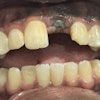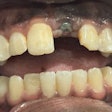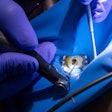Dear Imaging Insider,
Integration, affordability, and user-friendliness were the key themes for imaging vendors at the recent ADA conference in San Antonio. Digital radiography companies were touting their latest innovations, many of which centered around systems that offer not just panoramic imaging but the ability to upgrade to cone-beam CT -- all in a single package.
One imaging company that enjoyed a good amount of "buzz" on the ADA show floor was Aribex, whose handheld, battery-powered Nomad intraoral x-ray system has been commercially available since 2006. The Nomad is unique among portable x-ray systems because it looks like a cross between a ray gun and construction drill but operates like a conventional wall-mounted radiography system -- without the need for electrical cords or wall plugs. This enables the operator to stay in the room, next to the patient, while x-rays are taken, which proponents say speeds the process and reduces the need for retakes.
Unfortunately, the perception that it puts the operator at risk of radiation exposure has been a concern for many state dental boards. As a result, Aribex has spent the last three years conducting numerous radiation exposure studies and going state by state to gain the necessary clearances to allow dentists to use the Nomad. So far, 37 states have said OK, but others remain resistant. Read more in the Imaging Insider exclusive.
One proponent of the Nomad is Martin Jablow, D.D.S., a self-professed "technophile" who gave a great talk at the ADA meeting on budget-friendly gadgets -- including cameras, computers, and imaging systems -- that can enhance your practice. "You don't have to walk out of the room to take x-rays!" he said in his recommendation of the Nomad. Read more.
Dr. Edwin Parks and Dr. Allan Farman, both of Talking Pictures fame (the new imaging blog on the Word of Mouth page), also have good things to say about the Nomad. Their most recent Talking Pictures columns have touched on the pros and cons of a number of imaging technologies and techniques, from cone-beam CT to 2D versus 3D imaging and selection criteria.
Another recent Imaging Community feature focuses on the Logicon Caries Detection software program, which the company that developed it claims enables dentists to detect significantly more early proximal caries than they could just by looking at x-rays. Some imaging experts are still leery, however. Read more.
Finally, be sure to check out the latest comments in the Forums -- some interesting debates taking place regarding the traditional "wait and watch" method of dealing with third molars, plus very strong views on the "superhygienist" proposals and what they might mean for dentistry.















